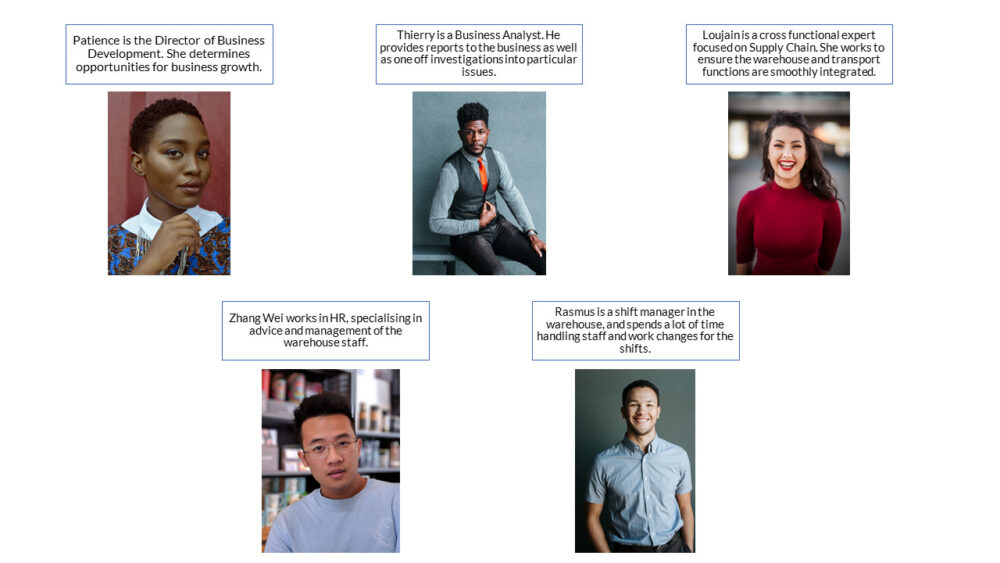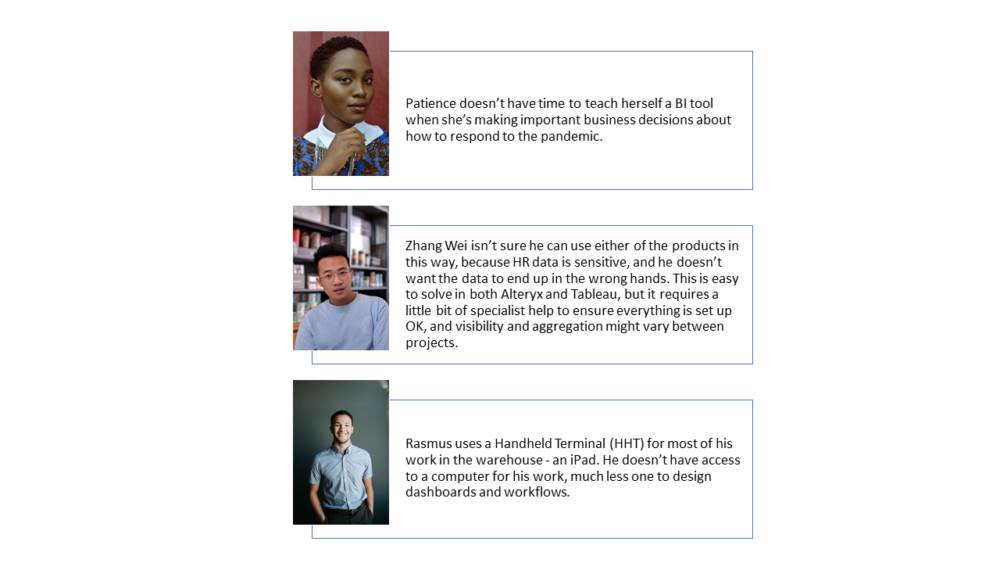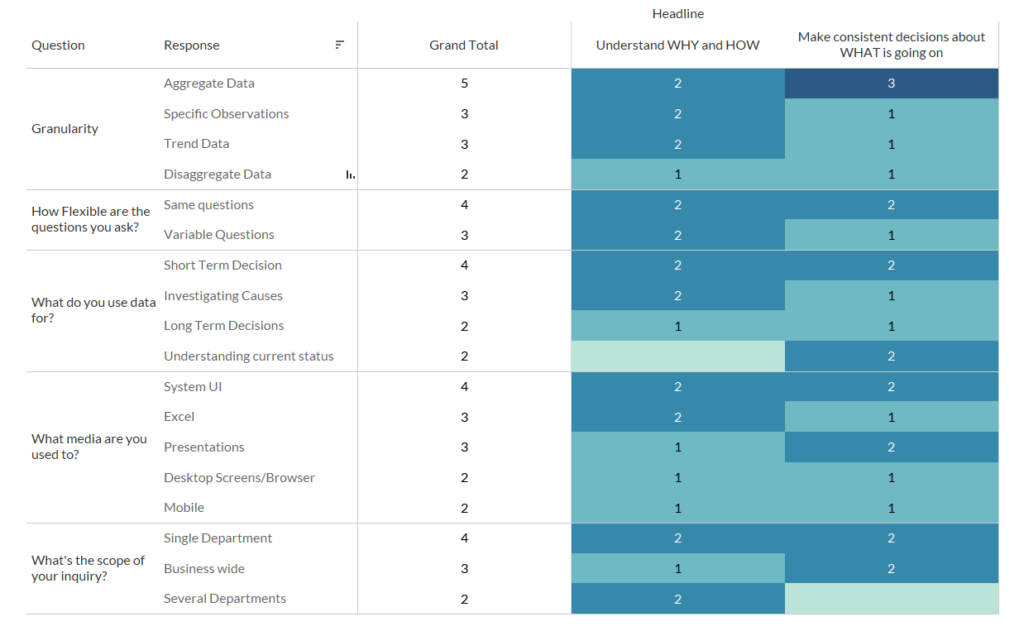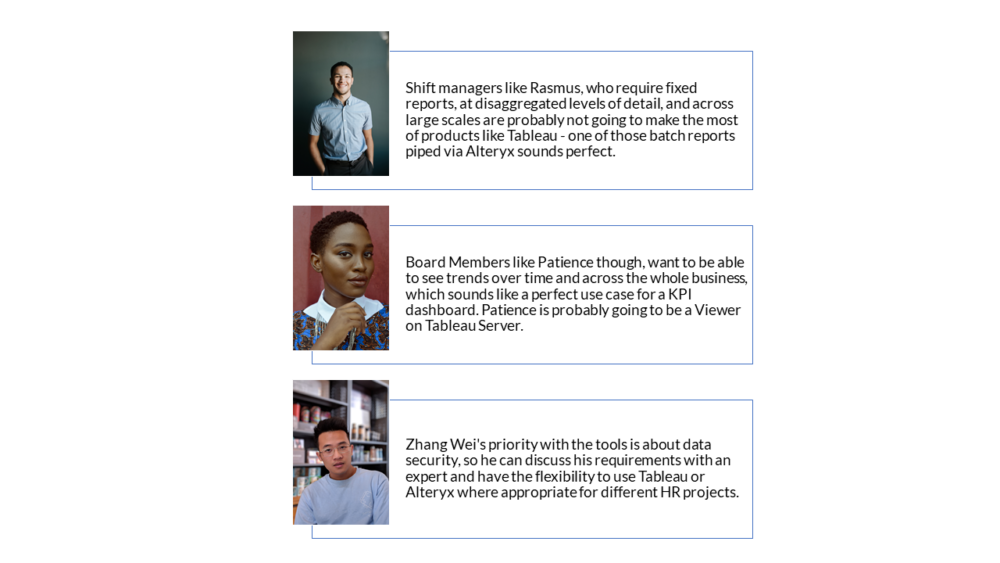Using personas to choose the right platform for your requirements
At The Information Lab we specialise in solutions using Tableau and Alteryx together. They do different jobs and we think they cooperate really well, because their strengths are complementary - Alteryx and Tableau Prep are very efficient at cleaning, merging and data science type tasks, while Tableau excels in transforming data to something tangible for people.
One common conundrum we work with clients to resolve is how to balance the requirements of the business users who want data, with the best tool for the job - when starting the data journey, it’s easy to become foxed by flashy charts and HBR articles which confuse people into thinking their ultimate goal is the panels from Minority Report to run a logistics business.
One way of approaching this problem is requirements gathering. But if we don’t want to box ourselves into a corner, and we don’t know the depth of the analytics potential at our organisation, this can flood our engine for change before we’ve even started. So, an alternative approach is if we consider the needs of our users without going into too much detail about their use cases, which we can do with user Personas, borrowing a little bit from Agile methodology.
We recently worked through a couple of examples, so I’m going to pose the question with a small to medium sized logistics business. How should we provision data and insight across the business?

We have five people who use data within the business, and we might think, in the grand spirit of data democratization, that the best thing to do would be to fling them all some software licenses, rustle up some data sources and some introductory training, and let them at it. It’s their data, they’ll know what they want, and it’ll empower their workforce.

This can stop an adoption in its tracks, because behind poor adoptions is failing to understand that people have different needs - and if you fail to understand it, they’ll keep telling you until they are shouting. So, how else can we think about this?

We can divide our users into the key types of questions they ask about their data. Those who have to make consistent decisions about what is going on have very different requirements from those who have to understand why and how - the former group is probably looking for something more fixed, while the latter group is looking for something more exploratory. We can use Tableau Desktop, Tableau Prep and Alteryx in both fixed and exploratory ways though, so it might help us to break down the scope of their use further.

OK, so getting some more details about the scope of our data usage reveals some differences between these two groups, but if we applied these priorities to the whole business, (that people want aggregated data, answering the same questions, to replace a system UI, for single departments), we’d be missing out huge swathes of important analysis for the business. Let’s try thinking about this with typical personas in the business instead.

Thinking about our logistics firm by personas allow us to consider the right needs at the right level for users across the business, without being overly specific to a particular user’s requirements - Rasmus might not speak for the whole logistics team, and the CFO’s notorious pedantry shouldn’t disrupt, Patience’s access to the trends of the business. Comparing the volume of users against the number of scope requirements also gives us a way of dividing our users, into the importance of capability and the importance of scale, and, related to both of those things, it permits us to consider questions of cost.

But what about Thierry and Loujain? Thierry and Loujain have more exploratory potential where some of the things they create might become permanent, but some of them might be on an ad hoc basis. However, as an analyst, Thierry is probably the only person who is building major business insight products, possibly on behalf of other people - but Loujain might need to on occasion. This means that Thierry would probably get the most from a Creator license on Tableau, and Curator role on Alteryx Server (with Alteryx Designer), while Loujain might make best use of an Explorer license on Tableau Server and/or an Artisan role on Alteryx Server.
Thanks for sticking with this example of using personas to analyse business insight needs! If you'd like to learn more about persona analysis, I recommend having a look at the following;
- Atlassian's Persona Template from their Confluence template repository
- This explanation of personas from Agile Alliance, including the important note that they should be defined with goals, not job descriptions, and that they aren't market segments either!
- This description on EasyAgile, which is written in a more 'product management' way but still has lots of great detail.
Hopefully this post has given you some idea of the flexibility of Tableau and Alteryx from the perspective of the business requirement, rather than a tool focused which you might be used to from technical departments - because when all you’ve got is Tableau Server, everything looks like a dashboard!
